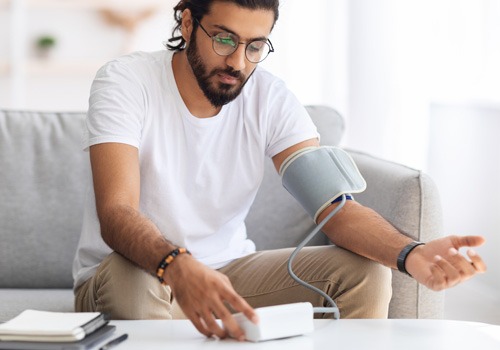
How Remote Patient Monitoring Can Help Manage Blood Pressure?
Introduction
High blood pressure, also known as hypertension, is a serious health condition that can lead to a number of serious illnesses and complications if left untreated. While there are many different methods of monitoring and managing hypertension, one of the most promising is remote patient monitoring. Using technology, healthcare professionals can keep checks on a patient's health remotely (remote patient monitoring, or RPM). It can help to diagnose, treat, and manage various medical conditions, including hypertension. In this article, we will discuss how remote patient monitoring can help manage blood pressure.
Remote patient monitoring blood pressure (RPMBP) is the use of digital technologies to remotely measure, monitor, and transmit patient vital signs, such as blood pressure, heart rate, respiratory rate, and temperature, to healthcare providers. The technology is used to track patient data and it is transmitted to a healthcare provider using a secure network connection, allowing them to monitor and respond to changes in a patient’s condition in real-time. RPMBP is often used to monitor chronic conditions such as hypertension, diabetes, and congestive heart failure, as well as to detect early signs of illness. By enabling healthcare providers to remotely monitor patients, RPMBP has the potential to improve patient outcomes, reduce costs, and increase the quality of care.
What is Remote Patient Monitoring?
With the use of technology, medical professionals may keep an eye on a patient's health from a distance. It works by using a variety of sensors, devices, and software to collect and transmit data about a patient’s health to a healthcare provider. This data can then be used to diagnose, treat, and manage various medical conditions. RPM is becoming increasingly popular as it can help to reduce costs and improve the quality of care for patients.
How RPM Can Help Manage Blood Pressure?
RPM can be used to monitor a patient's blood pressure in real-time and provide healthcare providers with an accurate picture of the patient's health. This data can be used to detect changes in blood pressure, and to identify patterns in the patient's health which can help inform decisions about treatment and lifestyle changes.
1. Automated Monitoring
RPM can be used to automate the process of measuring and tracking a patient's blood pressure. This can be done by using a device, such as a wrist or arm cuff, to measure the patient's blood pressure and transmit the data to a secure server or cloud-based system. The data can then be used to create a personalized profile for the patient, which can be used to monitor the patient's blood pressure over time. Automated monitoring can help healthcare providers to more quickly identify changes in the patient's blood pressure and intervene, if needed.
2. Remote Monitoring
RPM can also be used to monitor blood pressure remotely. This can be done by using a device, such as a wrist or arm cuff, to measure the patient's blood pressure and transmit the data to a secure server or cloud-based system. Healthcare providers can then access this data from anywhere, at any time, allowing them to monitor the patient's health in real-time and intervene if needed. This can be particularly useful in cases where the patient is unable to come into the office for regular check-ups.
3. Treatment Adjustments
RPM can also be used to make adjustments to a patient's treatment plan, if necessary. If the data collected by the RPM system indicates that the patient's blood pressure is elevated, the healthcare provider can make changes to the treatment plan in order to bring the patient's blood pressure back to a healthy level. This can lower the chance of complications and enhance overall health results.
Conclusion
In summary, remote patient monitoring can be a useful tool for managing blood pressure. It can provide healthcare providers with more accurate and up-to-date information about a patient’s blood pressure, as well as providing personalized advice to help them better manage their condition. However, there are some challenges associated with RPM that should be taken into account. With the right implementation, however, remote patient monitoring can be an effective tool for managing hypertension.

Comments (0)